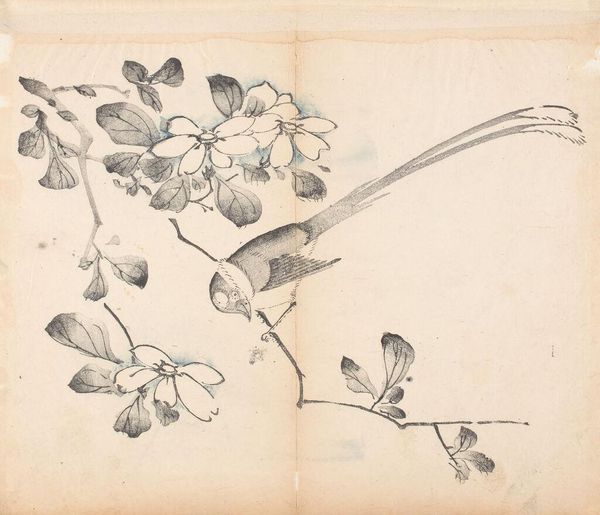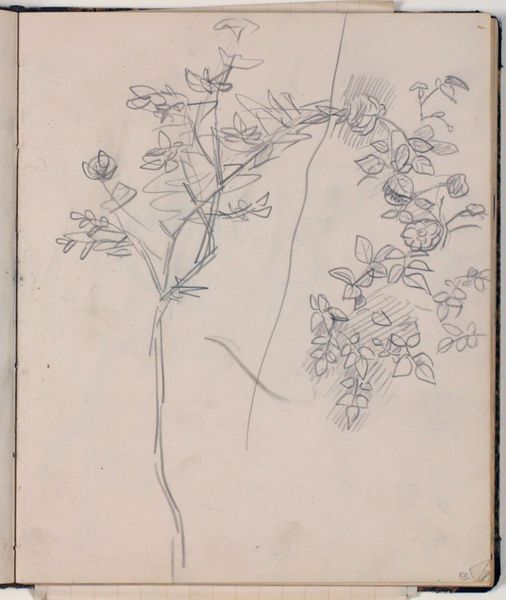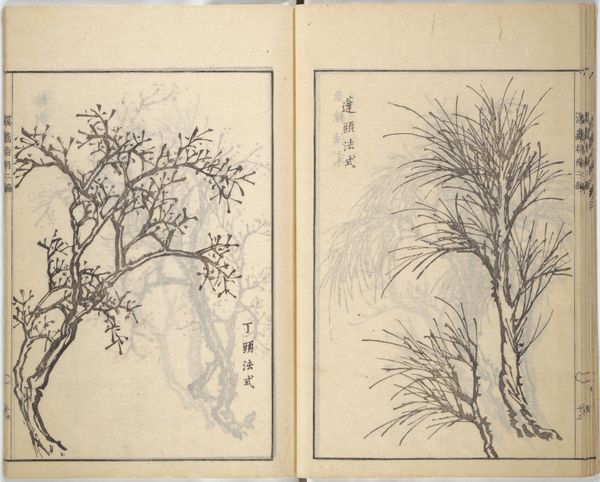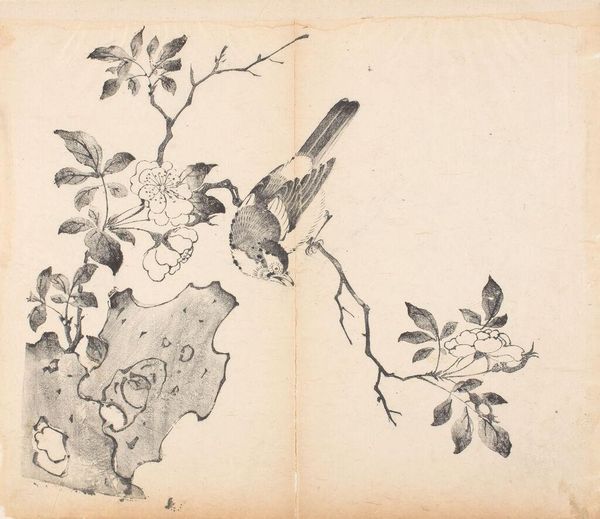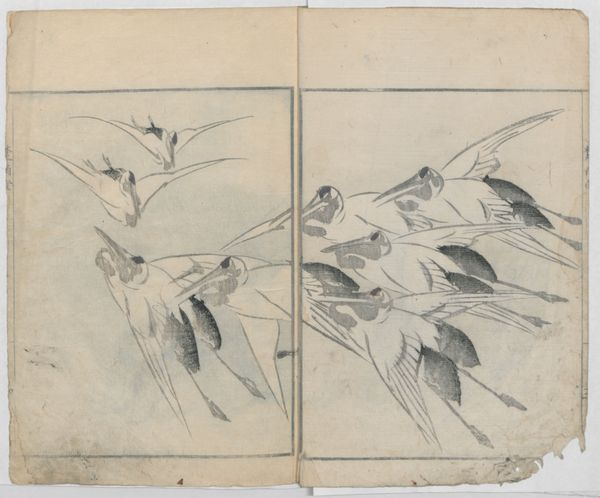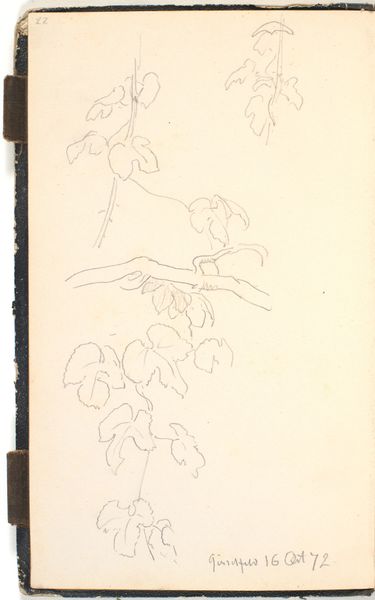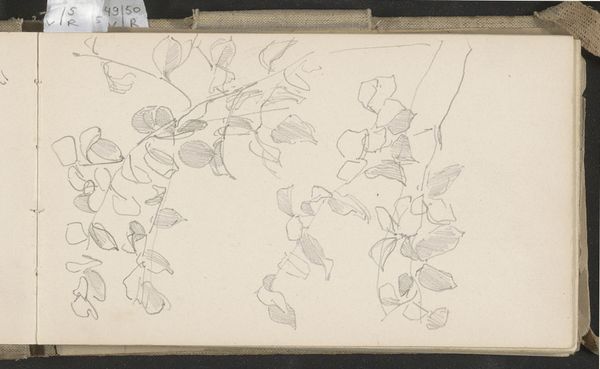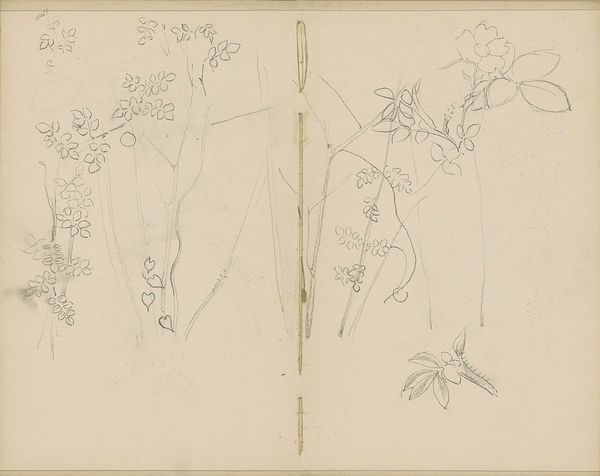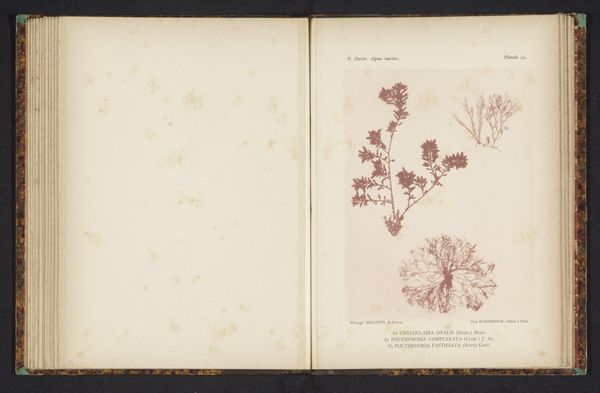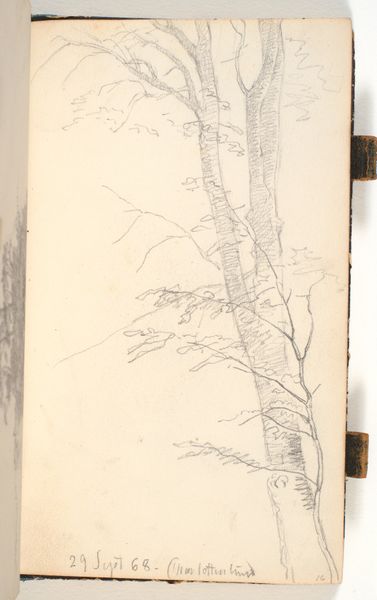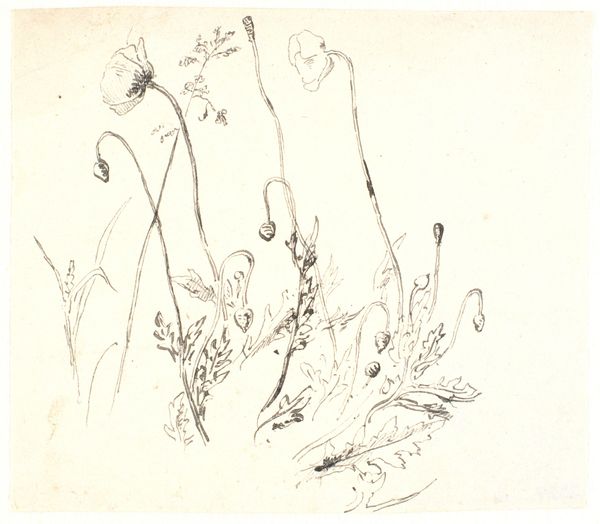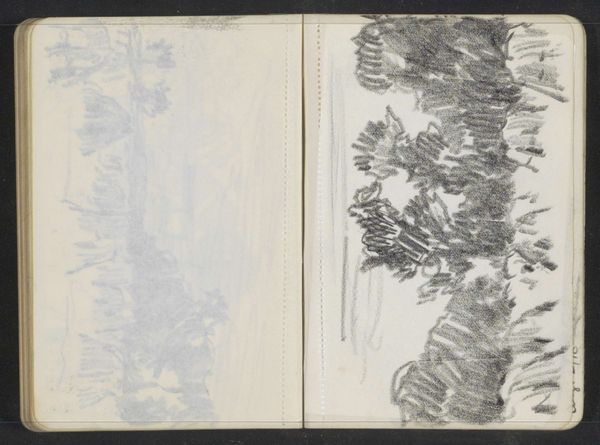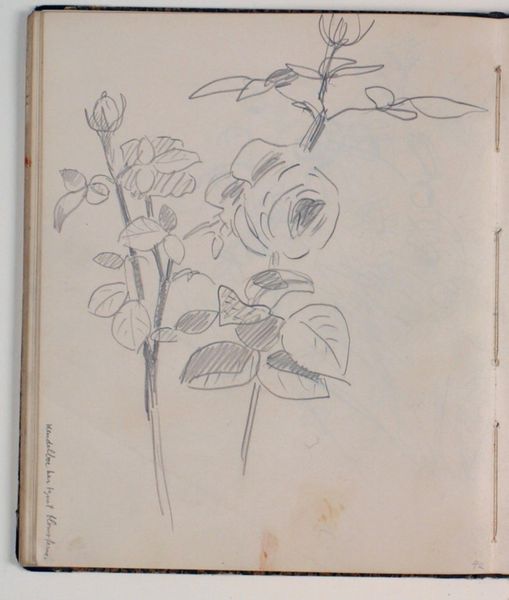
drawing, print, paper, ink, woodblock-print
#
drawing
#
ink painting
# print
#
book
#
asian-art
#
ukiyo-e
#
japan
#
paper
#
personal sketchbook
#
ink
#
woodblock-print
#
orientalism
#
line
Dimensions: Other: 10 3/8 × 7 3/8 in. (26.3 × 18.8 cm)
Copyright: Public Domain
Editor: Here we have Yamaguchi Soken’s *Soken Picture Album: The Plant Section* from 1807. It’s ink on paper, a woodblock print showing delicate botanical sketches. The book format makes it feel so intimate; what strikes you most about it? Curator: Immediately, I'm drawn to the materials themselves and the process of production. Think about the paper—its source, its texture, the way the ink interacts with it. These materials weren’t just readily available. Their creation and distribution involved labor, trade, and a specific economic context in 19th-century Japan. Editor: That's a point I hadn't considered. So the paper itself speaks to a larger system? Curator: Precisely! And look at the ink. It is created through burning material into soot and using hide glue. Someone was producing this. These elements represent very specific methods. The artist had an economy surrounding his chosen medium and what could or could not be produced en masse. Editor: Fascinating! Seeing it as a product of its time, instead of just a beautiful illustration, really shifts my perspective. Curator: Consider woodblock printing too – a reproducible medium. What does making nature, normally considered unique, something reproducible, imply about the social use of art at this moment in time? This was designed to appeal to a burgeoning merchant class in Osaka who were purchasing books to express their new wealth. Editor: I see your point. It ties this image, this book, to broader historical and social trends around production and consumption. I'll definitely keep that in mind moving forward. Curator: And hopefully, consider more broadly the systems that are required to have the art available at your fingertips in a modern context too. Editor: Thank you for offering a window onto the circumstances of making; that has certainly broadened my understanding.
Comments
No comments
Be the first to comment and join the conversation on the ultimate creative platform.
